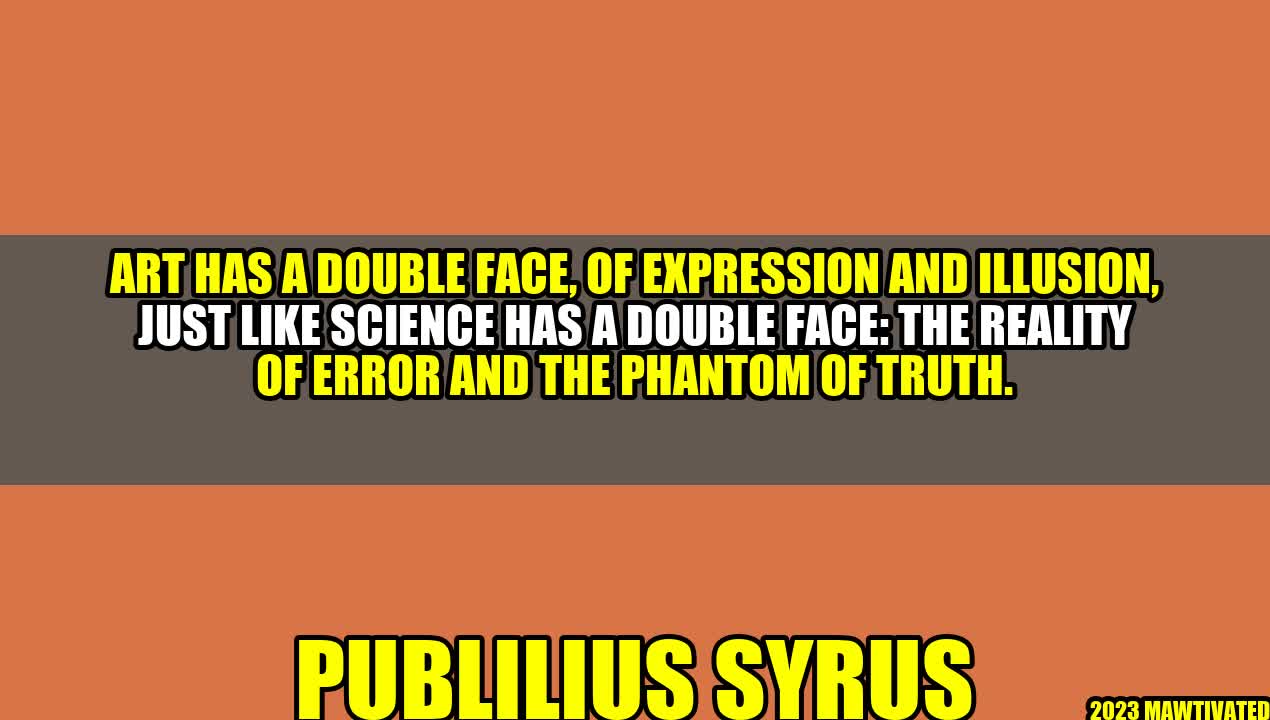The Double Face of Art and Science

Art has a double face, of expression and illusion, just like science has a double face: the reality of error and the phantom of truth. This quote by Publilius Syrus illustrates the paradoxical nature of two of the most fundamental parts of our world.
An Inspiring Story
A young artist struggled to create a painting that would capture the essence of love. She tried different colors, brushstrokes, and techniques, but nothing seemed to work. One day, as she was walking in the park, she saw an older couple holding hands and laughing. The way they looked at each other and smiled sparked something in the artist. She went back to her studio and painted the scene from memory. The painting turned out to be a masterpiece that conveyed the purest and most sincere form of love.
Expression and Illusion
Art is a medium of expression. It allows us to communicate emotions, ideas, and experiences that cannot be translated into words. Through art, we can capture the beauty of human nature, the complexity of the human condition, and the wonders of the world around us. At the same time, art is an illusion. It creates a parallel reality that is not bound by the laws of physics or logic. It allows us to explore the boundaries of our imagination and push the limits of our creativity.
Reality of Error and Phantom of Truth
Science is a pursuit of truth. It aims to discover the laws that govern our universe and the principles that guide our existence. But science is not infallible. The reality of error means that there will always be gaps in our knowledge, limitations in our tools, and biases in our perceptions. However, the phantom of truth keeps us motivated to seek answers, to challenge assumptions, and to embrace uncertainty. It is the belief that there is always more to learn, more to discover, and more to explore.
Examples
- Leonardo da Vinci’s Mona Lisa is a perfect example of the duality of art. The painting is a masterpiece of expression, as it conveys the enigmatic smile of a woman in a subtle and elusive way. At the same time, the painting is an illusion, as it plays with the viewer’s perception and creates an atmosphere of mystery and intrigue.
- Albert Einstein’s theory of relativity is a prime example of the reality of error and the phantom of truth. The theory revolutionized our understanding of space and time, but it also challenged the very foundations of physics. Einstein himself acknowledged that his theory was not complete and that it opened more questions than it answered.
Conclusion
- The duality of art and science reflects the complexity and richness of our world.
- Expression and illusion, reality of error and phantom of truth, are not mutually exclusive but intertwined.
- Embracing the paradoxical nature of art and science can lead to deeper insights, greater creativity, and more profound appreciation of life itself.
Hashtags
#art #science #duality #expression #illusion #reality #error #truth
SEO Keywords
art, science, duality, expression, illusion, reality, error, truth, Publilius Syrus
Article Category
Arts & Sciences

Curated by Team Akash.Mittal.Blog
Share on Twitter
Share on LinkedIn